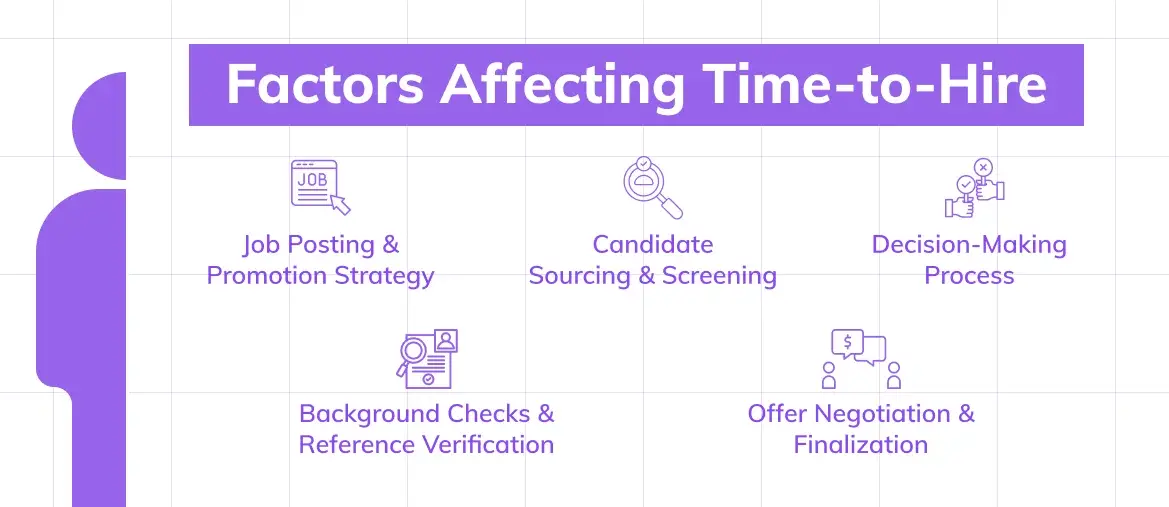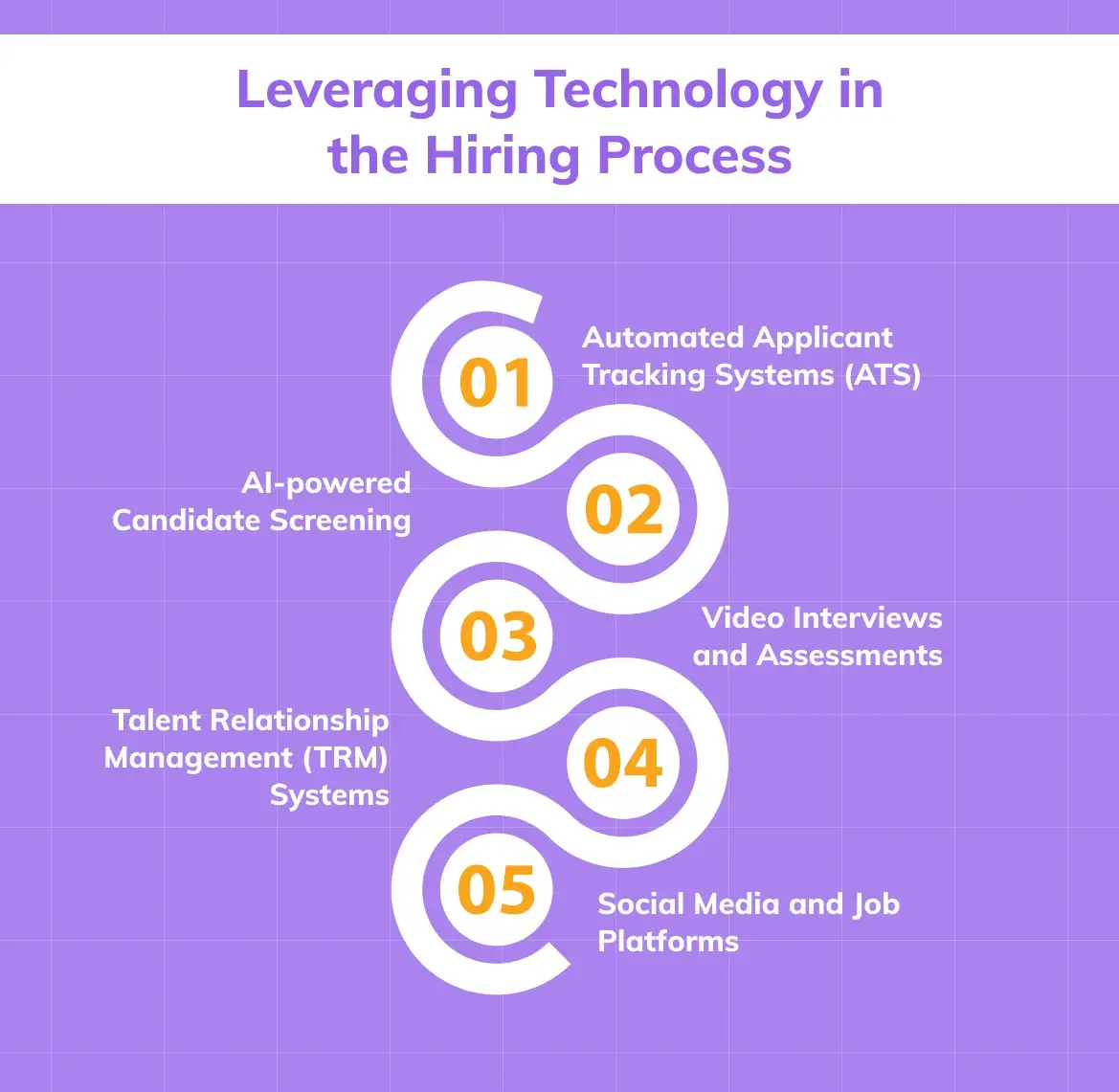Table of content
Are you finding the hiring process to be a time-consuming challenge? Do you want to solve the mysteries of hiring and streamline your time to hire? Look no further! In this comprehensive guide, we will dive deep into the intricacies of the hiring process and provide you with valuable insights and practical tips to make your hiring journey smoother and more efficient.
Whether you’re a seasoned HR professional or a small business owner wearing multiple hats, we understand the pain points you face when it comes to hiring. From crafting compelling job descriptions to screening resumes, conducting interviews, and making the final decision, each step in the process presents its own set of challenges.
Over the course of this blog, we will unravel the time-consuming nature of the hiring process and provide you with actionable strategies to save time, improve the quality of your hires, and ultimately enhance your overall recruitment efforts.
Time-to-Hire Metric And Its Importance
When it comes to the hiring process, one metric that holds significant value for businesses is the Time-to-Hire metric. This metric measures the amount of time it takes for a job opening to be filled, from the moment the position is posted to the day the new hire joins the company. Understanding the importance of the Time-to-Hire metric is vital for organizations looking to optimize their hiring process and attract the best talent available.
Why is the Time-to-Hire metric so crucial?
Efficiency in recruitment
The Time-to-Hire metric provides valuable insights into the efficiency of your recruitment process. By tracking the time it takes to fill a position, you can identify bottlenecks, streamline your procedures, and reduce delays. This ensures that your recruitment efforts are optimized and that qualified candidates don’t slip away due to a lengthy hiring process.
Candidate experience
A prolonged Time-to-Hire can negatively impact the candidate experience. Candidates who are kept waiting for a long time may lose interest, accept offers from other companies, or simply form a negative impression of your organization. By monitoring the Time-to-Hire metric, you can identify areas for improvement and provide a better experience to candidates, increasing the chances of attracting and securing the best talent.
Factors Affecting Time-to-Hire And How to Optimize Them?
When it comes to optimizing the hiring process and reducing the time-to-hire, several factors come into play. Understanding these factors can help you streamline your recruitment efforts and find the best candidate for your organization in a shorter time frame. Let’s explore the key elements that influence the time it takes to fill a job opening.
Job Posting and Promotion Strategy
- Craft a compelling job description that accurately portrays the role and its requirements.
- Use relevant keywords and optimize the job posting for search engines to attract qualified candidates.
- Employ effective recruitment marketing strategies, such as social media promotion, employee referrals, and targeted advertising, to reach a wider audience.
Candidate Sourcing and Screening
- Implement efficient sourcing methods to attract a pool of qualified candidates.
- Utilize technology tools, such as applicant tracking systems and resume screening software, to streamline the initial screening process.
- Conduct thorough interviews to evaluate candidates’ skills, experience, and cultural fit with the organization.
Decision-Making Process
- Ensure clear communication and coordination between the hiring team, HR team, and hiring manager.
- Define a structured evaluation process that includes objective criteria to assess candidates consistently.
- Promptly collect feedback from all involved parties to expedite the decision-making process.
Background Checks and Reference Verification
- Conduct comprehensive background checks and reference verifications for the top candidate(s).
- Collaborate with the HR team to ensure a smooth and efficient process for gathering all necessary information.
- Promptly address any issues or red flags that arise during the background check phase.
Offer Negotiation and Finalization
- Clearly define the compensation package and benefits offered to the selected candidate.
- Engage in open and transparent communication during the negotiation process.
- Finalize the job offer promptly to avoid losing the candidate to competitors.
Metrics for Effective Time-to-Hire
When it comes to optimizing your hiring process, having the right metrics in place is crucial. These metrics not only provide valuable insight into the efficiency of your recruitment process but also help you identify areas for improvement. In this section, we will explore some key metrics that can help you measure and improve your time-to-hire.
Average Time-to-Hire
The average time-to-hire metric calculates the average number of days it takes to fill a job opening from the moment the job is posted to the candidate accepting the job offer. This metric gives you a clear picture of your hiring process’s overall speed and efficiency.
Short Time-to-Hire
Having a short time-to-hire is crucial, especially in today’s competitive job market. This metric measures the number of days it takes to hire a top candidate from the moment they first enter the recruitment process. A shorter time-to-hire ensures that you secure the best talent quickly, minimizing the risk of losing them to other opportunities.
Candidate Experience
The candidate experience is a key metric to consider when evaluating your time-to-hire. It measures the quality of interaction a candidate has with your recruitment process, from initial contact to the job offer stage. A positive candidate experience not only improves your overall reputation as an employer but also increases the likelihood of attracting and retaining top talent.
Recruitment Process Efficiency
This metric examines the efficiency of your entire recruitment process, from sourcing and screening candidates to the final job offer. It helps you identify any inefficiencies or roadblocks that might be causing delays in filling job positions.
Leveraging Technology in the Hiring Process
In today’s fast-paced and competitive job market, leveraging technology has become essential for optimizing the hiring process. By incorporating innovative tools and platforms, businesses can streamline their recruitment efforts, attract top talent, and shorten their time-to-hire metric. Let’s explore some key ways technology can revolutionize your hiring process:
Automated Applicant Tracking Systems (ATS)
Implementing an ATS can greatly enhance your hiring efficiency. These systems allow you to organize and track candidate information, streamline communication with applicants, and automate tasks such as resume screening. By leveraging an ATS, you can ensure that no qualified candidate slips through the cracks and that your HR team can focus on engaging with the best candidates.
AI-powered Candidate Screening
Artificial Intelligence (AI) has transformed the way candidate screening is conducted. AI algorithms can analyze resumes, cover letters, and other application materials to quickly identify the most suitable candidates for a job opening. This technology eliminates bias and saves valuable time that would otherwise be spent manually reviewing countless resumes. With AI-powered screening, your hiring team can focus their attention on the most promising candidates.
Video Interviews and Assessments
Virtual interviews and assessments have become increasingly popular, especially with the rise of remote work. Using video conferencing platforms and online assessment tools, businesses can conduct interviews and evaluate candidates regardless of their geographical location. This not only saves time and resources but also allows for a more convenient and flexible candidate experience.
Talent Relationship Management (TRM) Systems
To build and nurture relationships with potential candidates, implementing a TRM system can be immensely beneficial. TRM systems help you maintain a talent pool, engage with passive candidates, and stay connected with potential hires over time. By utilizing TRM technology, you can proactively reach out to qualified candidates when new job openings arise, creating a seamless and personalized recruitment process.
Social Media and Job Platforms
Leveraging social media platforms, such as LinkedIn, Twitter, and Facebook, along with specialized job boards, can significantly expand your reach and attract a larger pool of candidates. These platforms allow you to promote job openings, showcase your employer brand, and engage with potential applicants on a more personal level. Utilizing social media and job platforms can be a cost-effective way to find the best talent for your organization.
Conclusion
In conclusion, mastering the Time to Hire process is essential for any organization looking to excel in their hiring efforts. By implementing the strategies discussed in this comprehensive guide, you can streamline your recruitment process, save time, and hire top talent more efficiently. When it comes to reducing time to hire, tracking and analyzing key metrics is paramount. By closely monitoring metrics such as sourcing channels, time spent in each recruitment stage, and candidate conversion rates, you can identify bottlenecks and make data-driven improvements. Additionally, leveraging technology can greatly enhance your hiring process.



